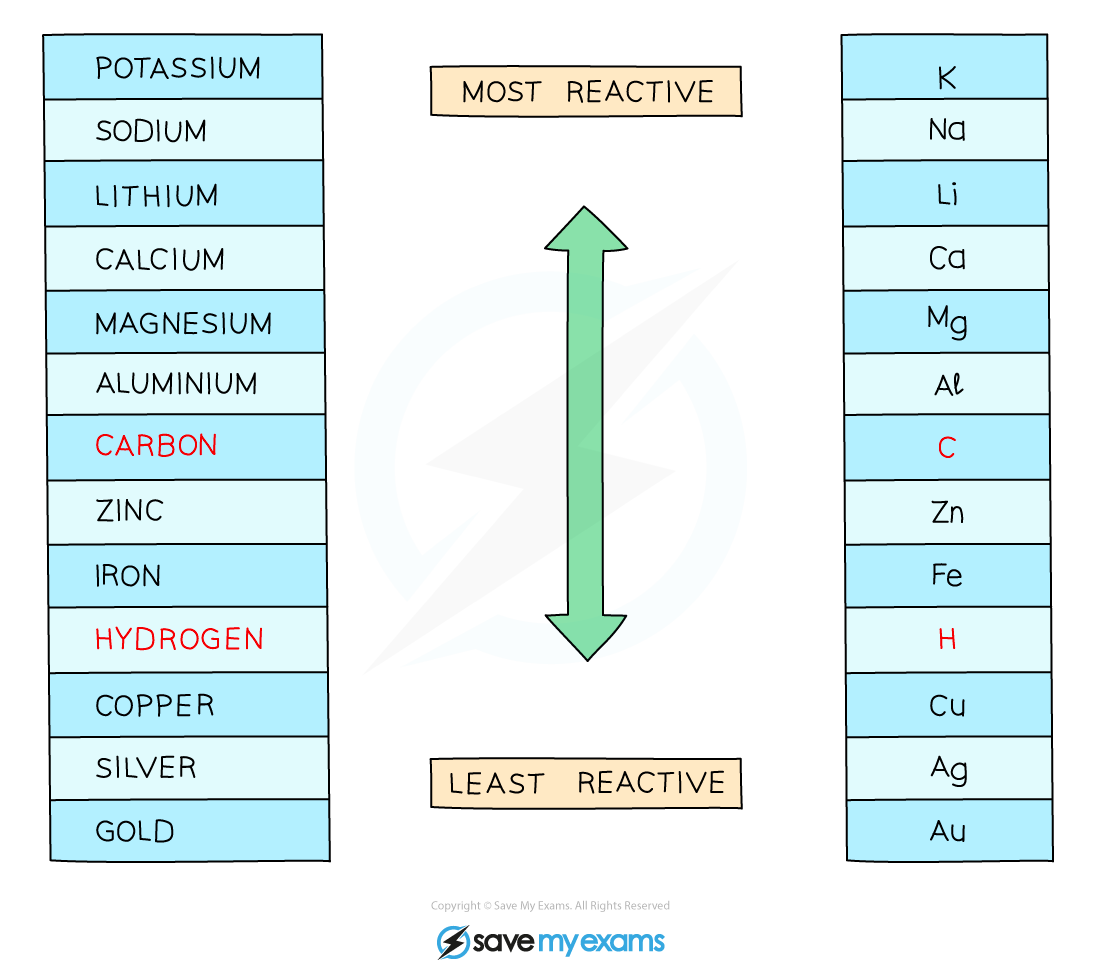Electrolysis of Aqueous Solutions (Edexcel GCSE Chemistry) : Revision Note
Did this video help you?
Electrolysis of Aqueous Solutions
Rules:
Aqueous solutions will always have water present
Some water molecules split up into hydrogen and hydroxide ions, H+ and OH–, which participate in the electrolysis reactions
Positive Electrode
Negatively charged OH– ions and non-metal ions are attracted to the positive electrode
If halide ions (Cl-, Br-, I-) and OH- are present then the halide ion is discharged at the anode, loses electrons and forms a halogen (chlorine, bromine or iodine)
If no halide ions are present, then OH- is discharged at the anode, loses electrons and forms oxygen gas
In both cases, the other negative ion remains in solution
Negative Electrode
H+ ions and metal ions are attracted to the negative electrode but only one will gain electrons
Either hydrogen or a metal will be produced
If the metal is above hydrogen in reactivity series, hydrogen will be produced – bubbling will be seen at the cathode

The reactivity series of metals enables chemists to predict the products at the cathode in the electrolysis of aqueous solutions
Electrolysing aqueous solution where there are gaseous products
The apparatus can be modified for the collection of gases by using inverted test tubes over the electrodes
The electrodes are made from graphite which is inert and does not interfere with the electrolysis reactions

The electrolysis of aqueous solutions using inverted test tubes to collect gases at the electrodes
Using Named Electrolytes
The products at the electrodes from solutions of copper chloride, sodium chloride, sodium sulfate and water acidified with sulfuric acid are as follows:
The Products of Electrolysing Aqueous Solutions

Explaining the products
copper chloride:
copper is below hydrogen so copper(II) ions are preferentially discharged at the cathode; chlorine is a halogen, so is preferentially discharged at the anode
sodium chloride:
sodium is above hydrogen so hydrogen ions are preferentially discharged at the cathode; chlorine is a halogen, so is preferentially discharged at the anode
sodium sulfate:
sodium is above hydrogen so hydrogen ions are preferentially discharged at the cathode; hydroxide ions are preferentially discharged over sulfate ions, so oxygen is produced at the anode
acidified water:
hydrogen ions are discharged at the cathode; oxygen from water molecules is preferentially discharged at the anode
Examiner Tips and Tricks
Once you have identified the ions, the next step is to decide towards which electrode will they be drawn and identify the product formed. It helps if you recall the reactivity series.

You've read 0 of your 5 free revision notes this week
Sign up now. It’s free!
Did this page help you?
